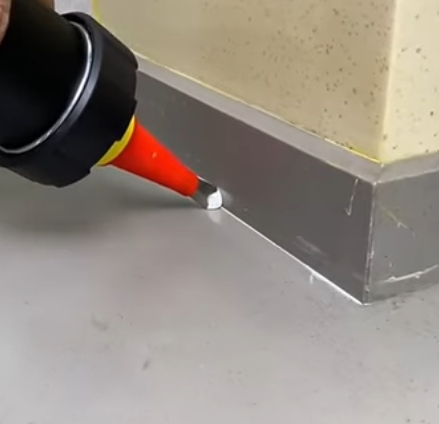Reasons for “bulging” of sealant
In autumn and winter, as the relative humidity in the air decreases and the temperature difference between morning and evening increases, the surface of the glue joints of glass curtain walls and aluminum curtain walls will gradually bulge and deform at various construction sites. Even some door and window projects will have the phenomenon of deformation and protrusion of the glue joint surface on the day of caulking and sealing. We call it the phenomenon of “bulging” of sealant.
1. What is “bulging” of sealant?
The curing process of single-component building silicone weatherproof sealant relies on the reaction with moisture in the air. When the curing speed of the sealant is slow, it will take a long time for the surface to cure to a sufficient depth. When the sealant surface has not cured to a sufficient depth, if the width of the glue joint changes greatly (this is usually caused by the thermal expansion and contraction of the panel), the surface of the glue joint will be affected and uneven. Sometimes the whole glue joint is bulging in the middle, sometimes it is a continuous bulge, and sometimes it is a twisted deformation. After the final curing of these uneven glue joints, the inside is solid (not hollow and bubbling), collectively referred to as “bulging”.
2. How does “bulging” occur?
The fundamental reason for the “bulging” phenomenon is that the glue undergoes a large displacement deformation during the curing process. It is the result of the combined effects of factors such as the curing speed of the sealant, the size of the glue joint, the material and size of the panel, the construction environment, and the construction quality. To solve the “bulging” phenomenon of the glue joint, it is necessary to eliminate the above-mentioned unfavorable factors that cause “bulging”. For a certain project, the ambient temperature and humidity are generally difficult to control artificially, and the panel material and size, glue joint design, etc. have also been determined. Then it can only be controlled from the type of sealant (glue displacement capacity and curing speed) and the change of ambient temperature difference.
A. Displacement capacity of sealant:
For a specific curtain wall project, since the plate size, the linear expansion coefficient of the panel material, and the annual temperature change of the curtain wall are all fixed values, the minimum displacement capacity required by the sealant can be calculated based on the set glue joint width. When the joint is narrow, it is necessary to select a sealant with a higher displacement capacity to meet the requirements of joint deformation.
B. Sealant curing speed:
At present, most sealants used for building joints are neutral silicone sealants, which can be divided into deoxime type and dealcohol type according to the curing category. The curing speed of deoxime silicone adhesive is faster than that of dealcohol silicone adhesive. In the construction environment with low temperature (4~10 ℃), large temperature difference (≥15 ℃) and low relative humidity (<50%), the use of deoxime silicone adhesive can solve most of the “bulging” problems. The faster the sealant cures, the stronger its ability to withstand joint deformation during the curing period; the slower the curing speed, and the larger the displacement deformation of the joint, the more likely the glue joint will “bulge”.
C. Temperature and humidity of the construction site environment:
Single-component silicone weather-resistant sealant for construction can only cure after reacting with moisture in the air, so the temperature and humidity of the construction environment have a certain effect on its curing speed. Generally speaking, the higher the temperature and humidity, the faster the reaction curing speed; the lower the temperature and humidity, the slower the curing reaction speed, and the glue joint “bulging” phenomenon is likely to occur. The recommended optimal construction conditions are: ambient temperature between 15℃ and 40℃, relative humidity> 50%RH, and glue cannot be applied in rainy or snowy weather. According to experience, when the relative humidity of the air is low (the humidity hovers around 30%RH for a long time), or the temperature difference between morning and evening is large, the daytime temperature may be around 20℃ (if the weather is fine at this time, the temperature of the aluminum plate exposed to the sun can reach 60~70℃), while the temperature at night is only a few degrees Celsius, so it is common for the curtain wall glue joint to bulge. Especially for aluminum curtain walls with large linear expansion coefficients and obvious deformation with temperature.
D. Panel material:
Aluminum plate is a material with a large thermal expansion coefficient among common panel materials. Its linear expansion coefficient is 2~3 times that of glass. Therefore, the thermal expansion and contraction deformation of aluminum plates of the same size is greater than that of glass, and it is more likely to cause “bulging” due to large thermal displacement caused by the temperature difference between day and night. The larger the size of the aluminum plate, the greater the deformation caused by the temperature difference. This is why the same sealant will bulge when used in some construction sites, but not in some construction sites. One of the reasons may be the different sizes of the curtain wall panels at the two construction sites.




